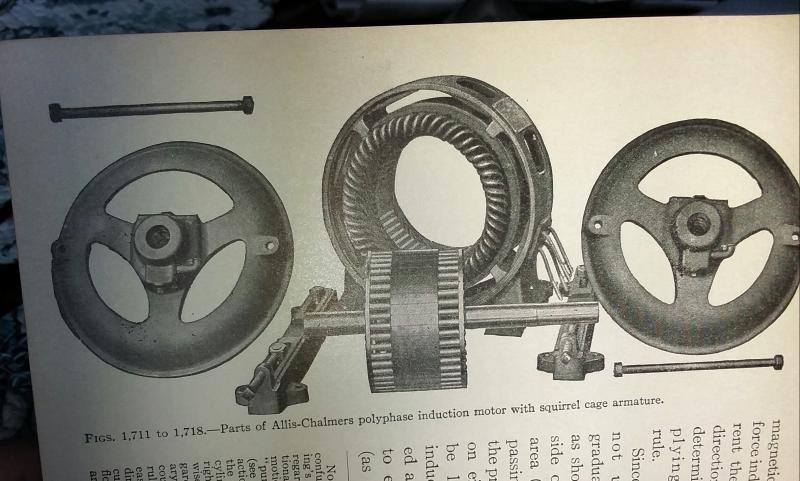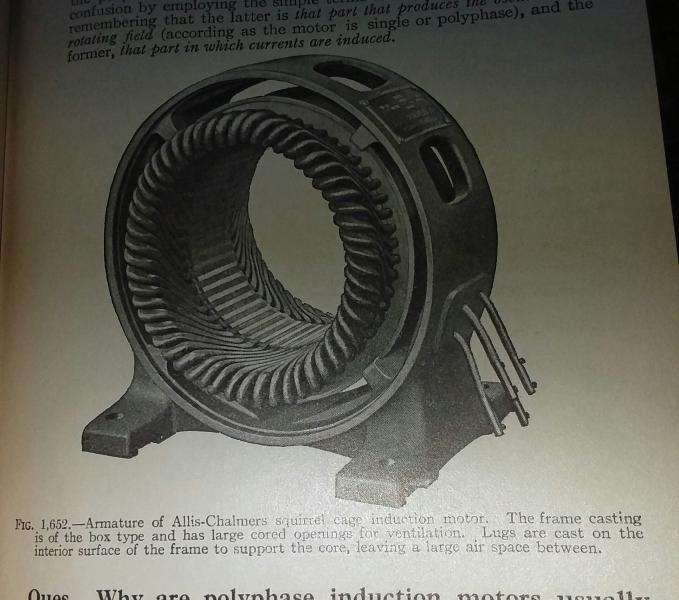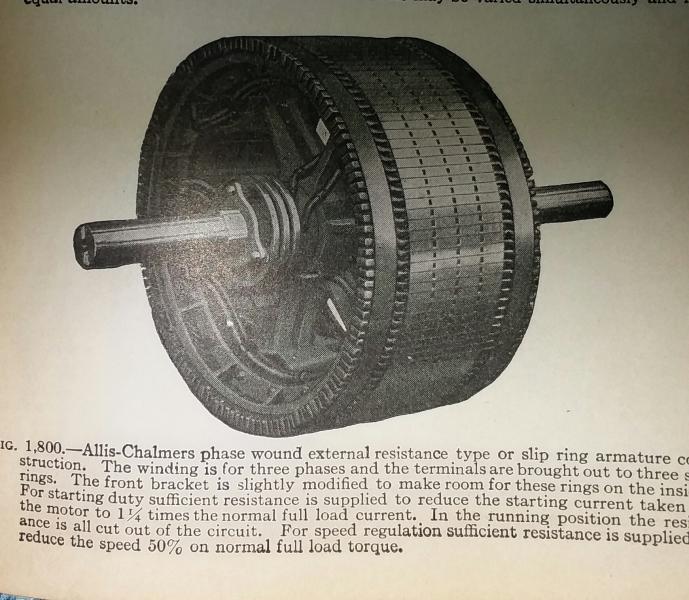| Author |
|
turbokinetic 
Bronze Level

Joined: 30 Jan 2019
Location: Alabama USA
Points: 19
|
 Post Options Post Options
 Thanks(0) Thanks(0)
 Quote Quote  Reply Reply
 Topic: Antique Ten Horsepower electric motor.... Topic: Antique Ten Horsepower electric motor....
Posted: 30 Jan 2019 at 8:23pm |
Hello folks. This is my first time posting here, and hope you find this interesting and may be able to shed some light on my antique motor. I located this Allis-Chalmers electric motor being used an a yard decoration in central Alabama. The owner was moving and wanted to get rid of the motor. He explained that the motor had been part of his grandfather's gristmill many years back and it had not been in operation for about 30 years. My question is, does anyone know of a way to estimate the manufacturing date of this motor? It appears to be 20's to 30's vintage, based on the styling of it, and the ring-oiled journal bearings. But I am not really an expert and would like to know if the motor's nameplate can shed some light on the manufacturing date.
Edited by turbokinetic - 30 Jan 2019 at 8:27pm
|
 |
|
Sponsored Links
|
|
 |
turbokinetic 
Bronze Level

Joined: 30 Jan 2019
Location: Alabama USA
Points: 19
|
 Post Options Post Options
 Thanks(0) Thanks(0)
 Quote Quote  Reply Reply
 Posted: 30 Jan 2019 at 8:50pm Posted: 30 Jan 2019 at 8:50pm |
Here is a video where I test the motor out... She is sick; but that startup sound...... [TUBE]9XJZQ_ZwK30[/TUBE]
|
 |
steve(ill) 
Orange Level Access

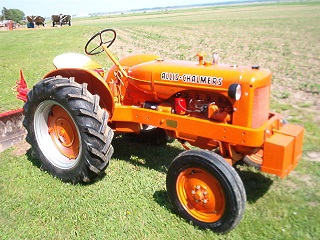
Joined: 11 Sep 2009
Location: illinois
Points: 89322
|
 Post Options Post Options
 Thanks(0) Thanks(0)
 Quote Quote  Reply Reply
 Posted: 30 Jan 2019 at 9:18pm Posted: 30 Jan 2019 at 9:18pm |
|
I cant help on the year, but I thing your close with your 20-30s guess. I worked at a plant with a bunch of 1940- 1950 motors and they were not that OPEN on the side covers.. More covered up / finger protectors.
|
|
Like them all, but love the "B"s.
|
 |
turbokinetic 
Bronze Level

Joined: 30 Jan 2019
Location: Alabama USA
Points: 19
|
 Post Options Post Options
 Thanks(0) Thanks(0)
 Quote Quote  Reply Reply
 Posted: 30 Jan 2019 at 10:13pm Posted: 30 Jan 2019 at 10:13pm |
 steve(ill) wrote: steve(ill) wrote:
I cant help on the year, but I thing your close with your 20-30s guess. I worked at a plant with a bunch of 1940- 1950 motors and they were not that OPEN on the side covers.. More covered up / finger protectors. |
Thanks Steve. I also acquired another early A-C motor, which is more enclosed. It's got Timken tapered roller bearings instead of the journal bearings on this one.
|
 |
steve(ill) 
Orange Level Access


Joined: 11 Sep 2009
Location: illinois
Points: 89322
|
 Post Options Post Options
 Thanks(0) Thanks(0)
 Quote Quote  Reply Reply
 Posted: 30 Jan 2019 at 10:29pm Posted: 30 Jan 2019 at 10:29pm |
https://www.youtube.com/watch?v=0Rz51yqEnrwyea, like that or a little newer. Most of the smaller motors we had used ball bearings on the ends and were greased once a month...... The larger 100- 600 HP motors had sleeve bearings and an oil cup on each end. Glass bulb was monitored to keep them full. Most of the end bells were somewhat "open" compared to motors built today, but not near as open as yours is........... ours were 1940 vintage.......... many built just AFTER WW2.
|
|
Like them all, but love the "B"s.
|
 |
turbokinetic 
Bronze Level

Joined: 30 Jan 2019
Location: Alabama USA
Points: 19
|
 Post Options Post Options
 Thanks(0) Thanks(0)
 Quote Quote  Reply Reply
 Posted: 31 Jan 2019 at 7:57am Posted: 31 Jan 2019 at 7:57am |
 steve(ill) wrote: steve(ill) wrote:
https://www.youtube.com/watch?v=0Rz51yqEnrwyea, like that or a little newer. Most of the smaller motors we had used ball bearings on the ends and were greased once a month...... The larger 100- 600 HP motors had sleeve bearings and an oil cup on each end. Glass bulb was monitored to keep them full. Most of the end bells were somewhat "open" compared to motors built today, but not near as open as yours is........... ours were 1940 vintage.......... many built just AFTER WW2. |
Must have been a very neat facility to work at; although back in the day I know things may have been somewhat harder on a day to day basis. I love the glass oiler cups, as well. That design sounds like my 1925 B.F. Sturtevant 42" exhaust fan motor. It's a Western Electric with glass oiler cups.
|
 |
Mikez 
Orange Level Access


Joined: 16 Jan 2013
Location: Usa
Points: 8831
|
 Post Options Post Options
 Thanks(0) Thanks(0)
 Quote Quote  Reply Reply
 Posted: 31 Jan 2019 at 11:13pm Posted: 31 Jan 2019 at 11:13pm |
|
Welcome to the forum. Are you a allis collector
|
 |
steve(ill) 
Orange Level Access


Joined: 11 Sep 2009
Location: illinois
Points: 89322
|
 Post Options Post Options
 Thanks(0) Thanks(0)
 Quote Quote  Reply Reply
 Posted: 01 Feb 2019 at 2:00pm Posted: 01 Feb 2019 at 2:00pm |
|
WOW.... never seen BRACES tapped into the motor housing itself ! That's one of a kind !
|
|
Like them all, but love the "B"s.
|
 |
jaybmiller 
Orange Level Access

Joined: 12 Sep 2009
Location: Greensville,Ont
Points: 24901
|
 Post Options Post Options
 Thanks(0) Thanks(0)
 Quote Quote  Reply Reply
 Posted: 01 Feb 2019 at 2:12pm Posted: 01 Feb 2019 at 2:12pm |
I'd have thought 'newer' as it's 60HZ, most everywhere was 25 cycle until mid 50s ? Sure is a NICE piece though !!!
|
|
3 D-14s,A-C forklift, B-112
Kubota BX23S lil' TOOT( The Other Orange Tractor)
Never burn your bridges, unless you can walk on water
|
 |
tadams(OH) 
Orange Level Access


Joined: 17 Sep 2009
Location: Jeromesville, O
Points: 11173
|
 Post Options Post Options
 Thanks(0) Thanks(0)
 Quote Quote  Reply Reply
 Posted: 01 Feb 2019 at 2:21pm Posted: 01 Feb 2019 at 2:21pm |
|
Must turn the pipes to fill the oilers cause you would make a awful mess other wise
|
 |
steve(ill) 
Orange Level Access


Joined: 11 Sep 2009
Location: illinois
Points: 89322
|
 Post Options Post Options
 Thanks(0) Thanks(0)
 Quote Quote  Reply Reply
 Posted: 01 Feb 2019 at 2:28pm Posted: 01 Feb 2019 at 2:28pm |
|
Jay, we have several power plants that were built in the 1925-30 -40 era and they were 60 hz in the Midwest USA...... I cant speak for everyone... Now the early generators on the EAST coast in 1880- 1890 era were lower Hz.
|
|
Like them all, but love the "B"s.
|
 |
steve(ill) 
Orange Level Access


Joined: 11 Sep 2009
Location: illinois
Points: 89322
|
 Post Options Post Options
 Thanks(0) Thanks(0)
 Quote Quote  Reply Reply
 Posted: 01 Feb 2019 at 2:33pm Posted: 01 Feb 2019 at 2:33pm |
apparently WESTINGHOUSE set the standard at 60 Hz for the USA.. Westinghouse Electric decided to standardize on a lower frequency to permit operation of both electric lighting and induction motors on the same generating system. Although 50 Hz was suitable for both, in 1890 Westinghouse considered that existing arc-lighting equipment operated slightly better on 60 Hz, and so that frequency was chosen.[5] Frequencies much below 50 Hz gave noticeable flicker of arc or incandescent lighting. The operation of Tesla's induction motor required a lower frequency than the 133 Hz common for lighting systems in 1890. In 1893 General Electric Corporation, which was affiliated with AEG in Germany, built a generating project at Mill Creek, California using 50 Hz, but changed to 60 Hz a year later to maintain market share with the Westinghouse standard.
|
|
Like them all, but love the "B"s.
|
 |
steve(ill) 
Orange Level Access


Joined: 11 Sep 2009
Location: illinois
Points: 89322
|
 Post Options Post Options
 Thanks(0) Thanks(0)
 Quote Quote  Reply Reply
 Posted: 01 Feb 2019 at 2:35pm Posted: 01 Feb 2019 at 2:35pm |
Must turn the pipes to fill the oilers cause you would make a awful mess other wise YEP.......... kind of looks like the gas filter on an ALLIS B ??? 
|
|
Like them all, but love the "B"s.
|
 |
DMiller 
Orange Level Access

Joined: 14 Sep 2009
Location: Hermann, Mo
Points: 34956
|
 Post Options Post Options
 Thanks(0) Thanks(0)
 Quote Quote  Reply Reply
 Posted: 01 Feb 2019 at 3:19pm Posted: 01 Feb 2019 at 3:19pm |
This would be a Proper Bubbler type oiler https://www.tricocorp.com/product/opto-matic-oiler-glass/# Bagnall dam had motors similar to this one for summer ventilation drives. They were Westinghouse but very similar size shape and 60hz, built in the 1920's/30s
Edited by DMiller - 01 Feb 2019 at 3:21pm
|
 |
turbokinetic 
Bronze Level

Joined: 30 Jan 2019
Location: Alabama USA
Points: 19
|
 Post Options Post Options
 Thanks(0) Thanks(0)
 Quote Quote  Reply Reply
 Posted: 01 Feb 2019 at 7:52pm Posted: 01 Feb 2019 at 7:52pm |
Thanks so much for the replies! I wasn't getting notices for some reason.
 tadams(OH) wrote: tadams(OH) wrote:
Must turn the pipes to fill the oilers cause you would make a awful mess other wise |
Those oilers on the antique fan motor aren't that bad, actually. The oiler assembly, with the metal base, will rotate and "cam out" of the pipe ell fitting. It works like an 1156 light bulb, where you push down and turn it to release it. Once it's out, you can turn it upright, remove the metal cover, and refill it.
Very interesting. If I remember, the oiler on the Sturtevant motor is Trico branded as well. Yeah they had 60 Hz power back in this day. They also had other frequencies as well. Just nothing was standardized! I made some more testing on the Allis-Chalmers motor today. My fear for this motor was that the winding was damaged. That could have been caused by the rotor rubbing the stator, and causing a localized hot spot. It could also have been caused by moisture and dirt in the winding. When I got the motor, it had a very poor insulation resistance value; just several KΩ of resistance. This was because the winding was caked with dirt, grease, feed dust, moss, mold, and other debris. That was causing a resistive short to ground, which could have burned the winding out, had the motor frame been grounded when it was running. I tried solvent to clean the winding, but it was not cutting the soil, since it was mostly non-petroleum materials. I had to resort to mild dishwashing soap, and the pressure washer. That blasted away the crud. It improved the insulation to several hundred KΩ of resistance, but that's still dangerous.My go-to method for drying a winding is to put a lot of amps through it with a DC supply, such as battery charger. In this case, the motor is so massive that even my biggest charger pushing 35 amps through it, only made it "warm" and not hot. It took a portable heater, a blanked over the stator, AND the charger to get it piping hot and drive the moisture off.The video of testing the insulation is here: https://youtu.be/QQBPMf7g_JU [TUBE]QQBPMf7g_JU[/TUBE]
|
 |
DonBC 
Orange Level Access


Joined: 12 Sep 2009
Location: Courtenay, BC,
Points: 947
|
 Post Options Post Options
 Thanks(0) Thanks(0)
 Quote Quote  Reply Reply
 Posted: 02 Feb 2019 at 12:52pm Posted: 02 Feb 2019 at 12:52pm |
|
A few decades ago I worked for a school system and occasionally a school's basement might flood because of a burst pipe or major rain storm. Our electrical maintenance dep't had and old electric range in their shop where they would place the drowned electric motors in the oven and 'bake' them dry.
|
|
Jack of all trades, master of none
|
 |
DMiller 
Orange Level Access

Joined: 14 Sep 2009
Location: Hermann, Mo
Points: 34956
|
 Post Options Post Options
 Thanks(0) Thanks(0)
 Quote Quote  Reply Reply
 Posted: 02 Feb 2019 at 3:34pm Posted: 02 Feb 2019 at 3:34pm |
|
At the Power station we would pull and send our larger electric motors out for rewinds due to insulation and varnish/enamel coatings break down from heat as they ran almost constantly. Most of ours were later model 'Squirrel Cage' aluminum bar induction motors. Zeller electric in IL was our source for a long time, they have now moved to other suppliers.
|
 |
turbokinetic 
Bronze Level

Joined: 30 Jan 2019
Location: Alabama USA
Points: 19
|
 Post Options Post Options
 Thanks(0) Thanks(0)
 Quote Quote  Reply Reply
 Posted: 02 Feb 2019 at 4:03pm Posted: 02 Feb 2019 at 4:03pm |
 DonBC wrote: DonBC wrote:
A few decades ago I worked for a school system and occasionally a school's basement might flood because of a burst pipe or major rain storm. Our electrical maintenance dep't had and old electric range in their shop where they would place the drowned electric motors in the oven and 'bake' them dry. |
That's a great idea. I could use an old oven for that, and for baking paint / powder coatings. But yeah, moisture needs to be combined with electricity (at significant voltage) to do damage to motor windings. If the motor isn't in operation, at the time it gets wet, you can just dry it out and it will be fine. The bearings, however, may need more in-depth service if they got filled with water as well.
 DMiller wrote: DMiller wrote:
At the Power station we would pull and send our larger electric motors out for rewinds due to insulation and varnish/enamel coatings break down from heat as they ran almost constantly. Most of ours were later model 'Squirrel Cage' aluminum bar induction motors. Zeller electric in IL was our source for a long time, they have now moved to other suppliers. |
Understood. There's a lot of debate about the expected life span on most industrial motors. The average reported life from across the industry seem to be in the 10 to 20 year range before a major failure. It seems that it's so dependent on the application that one has a hard time predicting motor life in any new application; however once a trend is established it's usually repeatable unless something changes in the application. Were the powerstation motor rewinds done based on measured parameters with the motor, before a failure - or were they done when the motor finally did suffer a major failure? Sincerely, David
|
 |
DMiller 
Orange Level Access

Joined: 14 Sep 2009
Location: Hermann, Mo
Points: 34956
|
 Post Options Post Options
 Thanks(0) Thanks(0)
 Quote Quote  Reply Reply
 Posted: 03 Feb 2019 at 6:52am Posted: 03 Feb 2019 at 6:52am |
|
Usually based on heat display(thermal imaging) and amperage changes over time in use, the engineers could track that parameter. Amps go up voltage down and heat ensued in maintaining work(watts). Most as I noted were continuous driven motors, our Condensate pumps from the Steam condenser were Allis Chalmers built in the late 70's, they had to be rewound every other year as they ran so hard and so hot while having water cooled bearing oil coolers. We had other AC units but they had the added Siemens nametags.
|
 |
turbokinetic 
Bronze Level

Joined: 30 Jan 2019
Location: Alabama USA
Points: 19
|
 Post Options Post Options
 Thanks(0) Thanks(0)
 Quote Quote  Reply Reply
 Posted: 03 Feb 2019 at 8:53am Posted: 03 Feb 2019 at 8:53am |
 DMiller wrote: DMiller wrote:
Usually based on heat display(thermal imaging) and amperage changes over time in use, the engineers could track that parameter. Amps go up voltage down and heat ensued in maintaining work(watts). Most as I noted were continuous driven motors, our Condensate pumps from the Steam condenser were Allis Chalmers built in the late 70's, they had to be rewound every other year as they ran so hard and so hot while having water cooled bearing oil coolers. We had other AC units but they had the added Siemens nametags. |
Sounds like they had the maintenance / rewind schedule pretty well figured out. I bet those were high speed motors as well, probably driving multistage pumps for the condensed water. I bet there was a lot of bearing heat involved to need that sort of oil cooler. Some of our generators run at 1800 RPM and use journal bearings which have water cooled oil coolers. I bet the condensate pump motors were running about twice as fast.
|
 |
turbokinetic 
Bronze Level

Joined: 30 Jan 2019
Location: Alabama USA
Points: 19
|
 Post Options Post Options
 Thanks(0) Thanks(0)
 Quote Quote  Reply Reply
 Posted: 04 Feb 2019 at 7:58pm Posted: 04 Feb 2019 at 7:58pm |
Hi Folks. A friend over on the Antique Fan Collectors' Association shared these book pages with me. This book is from 1914 so it seems this motor may be a few years older than we first assumed.
|
 |
DaveKamp 
Orange Level Access

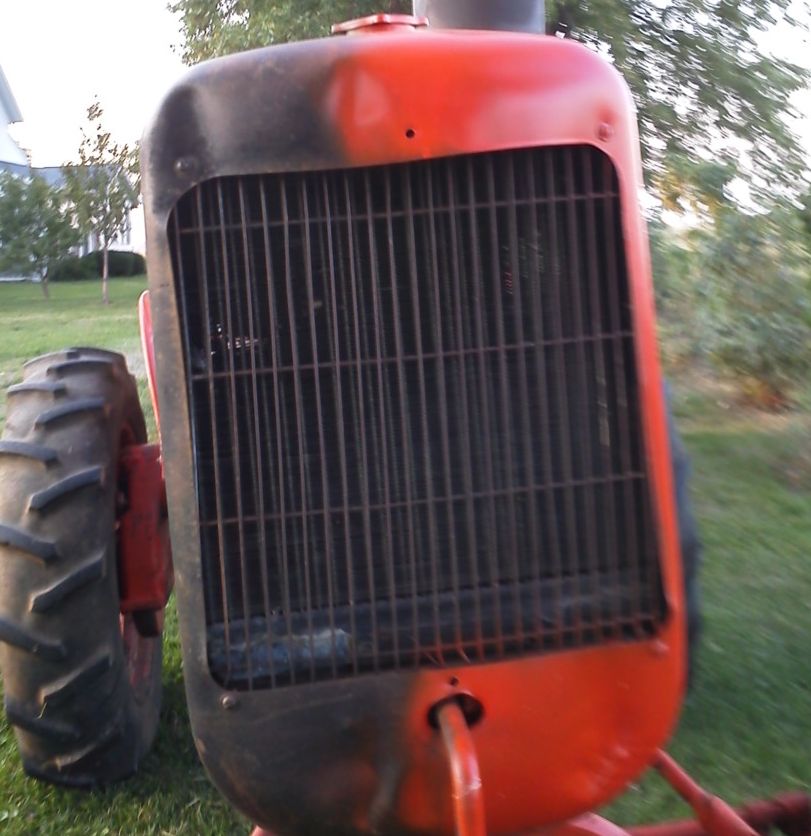
Joined: 12 Apr 2010
Location: LeClaire, Ia
Points: 6109
|
 Post Options Post Options
 Thanks(0) Thanks(0)
 Quote Quote  Reply Reply
 Posted: 04 Feb 2019 at 9:23pm Posted: 04 Feb 2019 at 9:23pm |
 steve(ill) wrote: steve(ill) wrote:
apparently WESTINGHOUSE set the standard at 60 Hz for the USA.. |
Although higher frequency operation allows smaller transformers and motors at the same power level, there's a pile of tradeoffs that come on as frequency increases.
The 60hz standard was not so much chosen for electrical properties, as it was for OTHER purpose: Timekeeping standards.
George Westinghouse was a railroad man... by using a 60hz base frequency, it was very simple to make an electric clock that would keep accurate and synchronized TIME at ANY point in a power system. They set up governance, so that, at the end of each 24 hours, they had averaged exactly 5184000 cycles in a given 24 hour period.
Realize that an AC power 'grid' has a generator at one end of a line, that's connected to loads along a line, and that's conected to another line, going in another direction, to more loads, and more generators... all the generators are spinning TOGETHER, and pushing power on the same line. The LOAD limits frequency- a generator must be strong enough to push the WHOLE LOAD, if it is going to increase the line frequency, but to do so, the generator must be strong enough to take the load, which is effectively infinite (at least, in the perspective of a generating plant), so it cannot go 'faster' than the line frequency. it's very clever...
And this is why your old fashioned synchronous motor-type electric clock was always correct, as long as the power didn't go out. Westinghouse's building clocks, railway clocks, signalling timers... all used that line voltage not only as power, but as a frequency standard for time-division.
|
|
Ten Amendments, Ten Commandments, and one Golden Rule solve most every problem. Citrus hand-cleaner with Pumice does the rest.
|
 |
turbokinetic 
Bronze Level

Joined: 30 Jan 2019
Location: Alabama USA
Points: 19
|
 Post Options Post Options
 Thanks(1) Thanks(1)
 Quote Quote  Reply Reply
 Posted: 29 Dec 2019 at 2:39pm Posted: 29 Dec 2019 at 2:39pm |
Hi, I wanted to check in again after letting this motor sit for so long. Things were very busy at the machine shop where I took the worn shaft and bearings. I also went overseas for work and was unable to follow up with them about this small job repairing the shaft.
Finally the shaft was completed!
I also had cleaned and re-varnished the stator, in preparation for getting use. Some of the slot covers were pushed up and rubbing the rotor, even with the shaft repaired. I buffed them down so that nothing would rub.
The rotor also had grime and rust, so it got cleaned.
I modified the bearings slightly; by adding a copper pin. This is to prevent the oiling ring from jumping out of the bearing slot and failing to oil the shaft. I didn't take a picture but it is in the video.
With a new coat of paint, it's looking pretty neat, even if I do say so myself.
So - what to do with it? I love antique machinery but I also like to be able to put it to use. In this case, I don't need to run any equipment with a 10 HP motor.... but I do have a three phase converter which is getting really tired. Time to build a new 3-phase converter!
Virtually all of the parts used were salvaged parts.
I built it into a wood base with wheels, so as to make it semi-portable LOL!
The 3-phase outlet and test cord.
There's a lot in the box...
I continued the motor restoration videos, with the shaft and bearing reinstallation. [TUBE]-p0qtqYTiGQ[/TUBE]
There is a link to the phase converter build at the end of the motor repair videos. If it doesn't appear, you can copy this link to the first of the phase converter build videos:
https://www.youtube.com/watch?v=RyG_hOwCrAY |
I'm sorry, in advance, for the rant in the videos. Just a little irritated with the trolls these days. :)
This motor has so much iron and copper in it, that it makes an amazing phase converter. Well more potent than expected. Could start another more modern 10 HP motor "effortlessly" and even was able to start a 20 HP.
Thanks for the interest and hopefully you've enjoyed seeing this yard decoration be put to use again!
Sincerely, David
|
 |
SteveM C/IL 
Orange Level Access

Joined: 12 Sep 2009
Location: Shelbyville IL
Points: 8762
|
 Post Options Post Options
 Thanks(0) Thanks(0)
 Quote Quote  Reply Reply
 Posted: 29 Dec 2019 at 9:48pm Posted: 29 Dec 2019 at 9:48pm |
|
Very well done! That is neat! Kind of rewarding isn't it?
|
 |
turbokinetic 
Bronze Level

Joined: 30 Jan 2019
Location: Alabama USA
Points: 19
|
 Post Options Post Options
 Thanks(0) Thanks(0)
 Quote Quote  Reply Reply
 Posted: 29 Dec 2019 at 10:10pm Posted: 29 Dec 2019 at 10:10pm |
 SteveM C/IL wrote: SteveM C/IL wrote:
Very well done! That is neat! Kind of rewarding isn't it? |
Thank you Steve! Yes it is very rewarding indeed.
|
 |
exSW 
Orange Level

Joined: 21 Jul 2017
Location: Pennsylvania
Points: 914
|
 Post Options Post Options
 Thanks(0) Thanks(0)
 Quote Quote  Reply Reply
 Posted: 30 Dec 2019 at 7:13am Posted: 30 Dec 2019 at 7:13am |
|
Fascinating thread . Thank you.
|
|
Learning AC...slowly
|
 |
turbokinetic 
Bronze Level

Joined: 30 Jan 2019
Location: Alabama USA
Points: 19
|
 Post Options Post Options
 Thanks(0) Thanks(0)
 Quote Quote  Reply Reply
 Posted: 30 Dec 2019 at 10:05am Posted: 30 Dec 2019 at 10:05am |
 exSW wrote: exSW wrote:
Fascinating thread . Thank you. |
You're welcome. Glad it was interesting to you! Now I have to get some more antique 3-phase equipment to run with it LOL! :)
|
 |
HD6GTOM 
Orange Level


Joined: 30 Nov 2009
Location: MADISON CO IA
Points: 6627
|
 Post Options Post Options
 Thanks(0) Thanks(0)
 Quote Quote  Reply Reply
 Posted: 31 Dec 2019 at 7:04pm Posted: 31 Dec 2019 at 7:04pm |
|
I certainly wish I understood electricity like you guys.
|
 |










 Topic Options
Topic Options

 Post Options
Post Options Thanks(0)
Thanks(0)




 steve(ill) wrote:
steve(ill) wrote:
